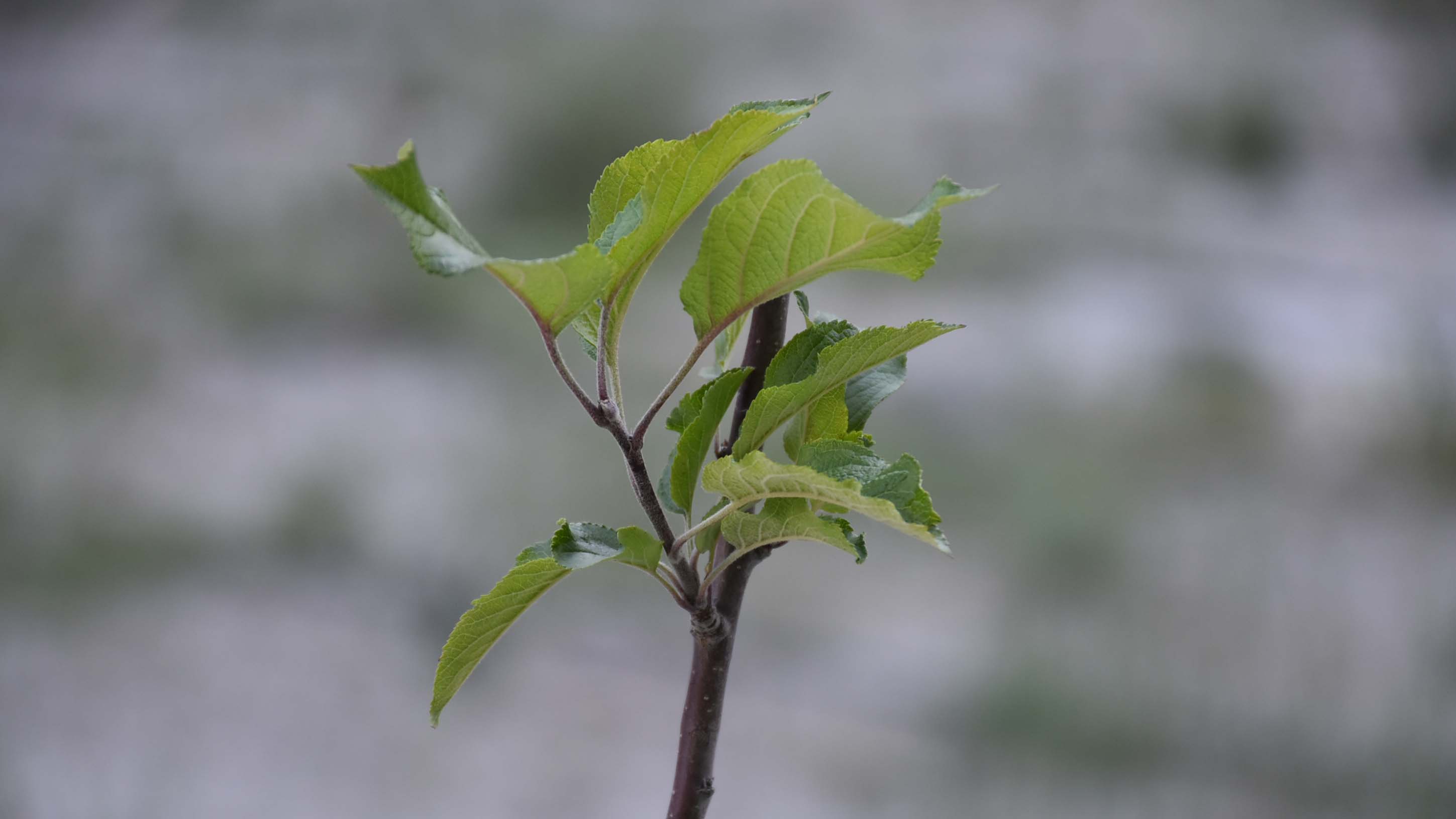Amid the changing mountain climate, women of the Hindu Kush Himalayan region ensure food security using climate-smart agriculture technology
It is a routine matter for Naila Shah, a young woman, to walk for two miles from her village to the Purdast area of mountainous Khyber valley. Using a shovel, she weeds out the grasses and unwanted shrubs from the soil and makes a boundary around a young apple tree to make sure that every drop of water is absorbed by the tiny roots of the tree.
The Khyber valley lies in Hunza district at the height of 2,500 metres above the sea level. It is part of the mighty Karakoram range in the Gilgit Baltistan region of Pakistan.
Naila is the secretary of Women Development Organization and a school teacher by profession. She is not alone in performing these agricultural practices, as the work is divided among other women of the organization as well. These women are breaking all the stereotypes to be the change, in an effort to improve their livelihoods.
They carry out day-to-day agricultural practices on one hectare of land to grow apples which was previously considered impossible. The orchard has 500 apple plants proudly managed by the mountain women.
“The land used to be barren, as water couldn’t be lifted from the river flowing right next to the area due to lack of infrastructure,” tells Naila.
But thanks to the project by World Wide Fund for Nature-Pakistan (WWF-Pakistan) through which a hydro ram pump and drip irrigation system has been installed, which enabled the apple orchard to grow.
Naila further informs, “The land belongs to the women of the local community, who are responsible for maintaining the orchard.”
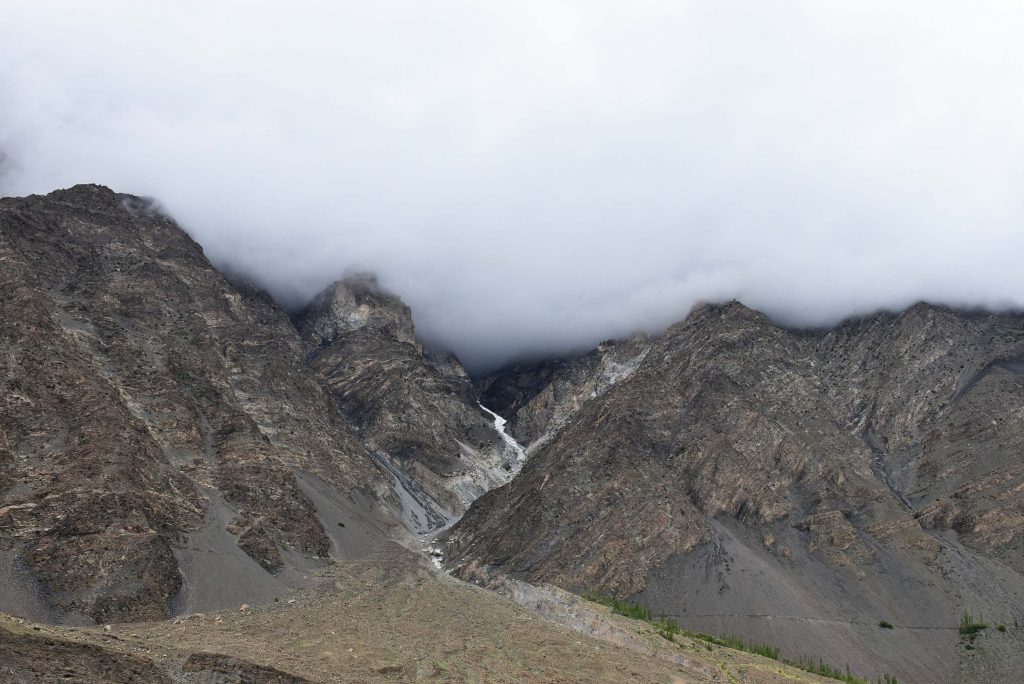
The orchard is surrounded by the mountains of Karakoram range 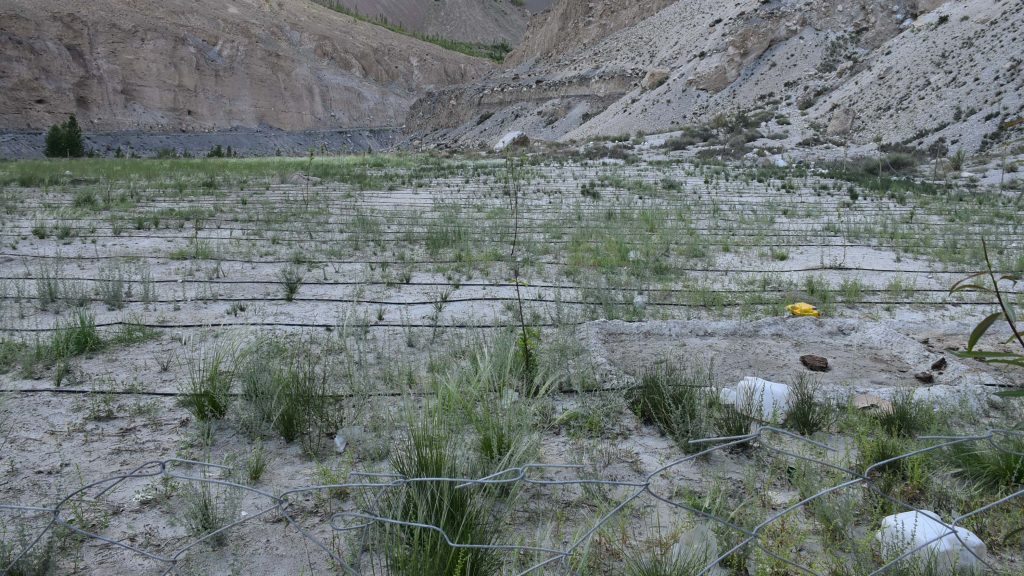
The apple orchard is fenced to prevent livestock from damaging the apple plants 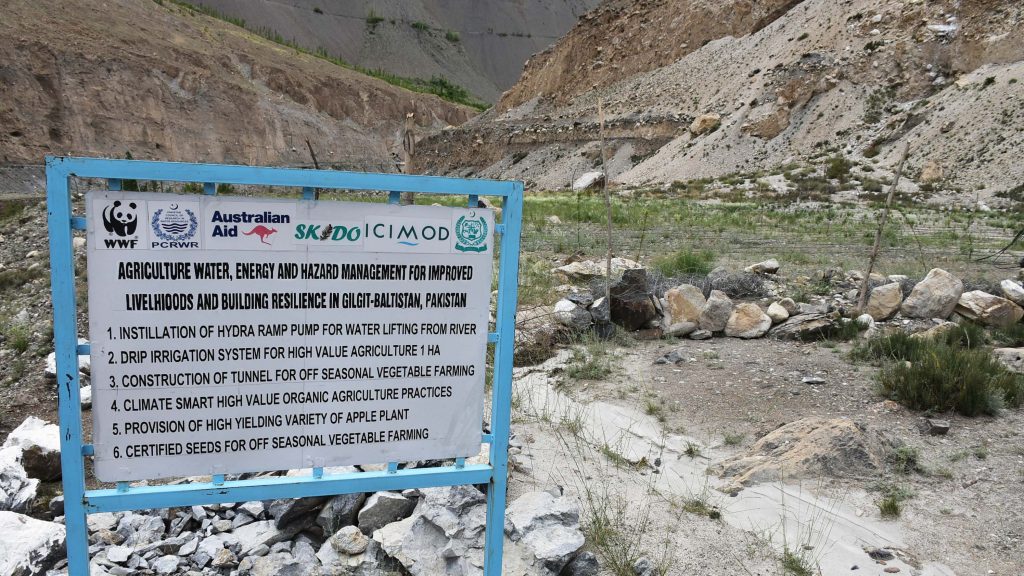
The climate-smart agriculture project involves various stakeholders
She also shares that they plan to introduce different kinds of vegetables for short-term benefits, as apples take 4-5 years to grow. “We will soon plant the saplings of potato, peas, carrot and daikon, and if the output is good their cultivation will be increased.”
“The revenue generated by selling apples and vegetables would only go to the women and empower their livelihoods,” says Naila.
Alongside women are a group of men tilling the soil. These men represent SKIDO, a partner organization involved in the project. Shujaat Ali, one of the members of SKIDO informs that the role of men is limited to providing technical assistance with regards to manual labour and maintenance of equipment. He says, “The output from this land in the form of apples and vegetables would go to the women organization and increase women’s savings.”

The scarcity of water is regarded as one of the reasons for introducing this project. Haider Raza who works as the head of Gilgit Baltistan region at WWF-Pakistan informs that despite being abundant in water reserves, Gilgit Baltistan is suffering from water shortage, which has resulted into large swathes of barren land. He says, “The government cannot afford larger irrigation systems due to cost implications. However these high-efficiency irrigation systems which aren’t an expensive technology can be used to improve the livelihoods of local communities.”
“The initiative can be used to ensure water and food security in the mountainous region of Pakistan, as water will get further scarce in future,” adds Haider.
Haider Raza also shares information relating to the Phase-1 of the project, which was implemented in Passu village, situated at a distance of 5km from the current project site in Khyber valley. He says, “We used solar panels in Phase-1 of the project to lift water from the nearby Shimshal river to irrigate 1,100 apple plants.”

The Phase-1 of the project was implemented by the women of Passu village 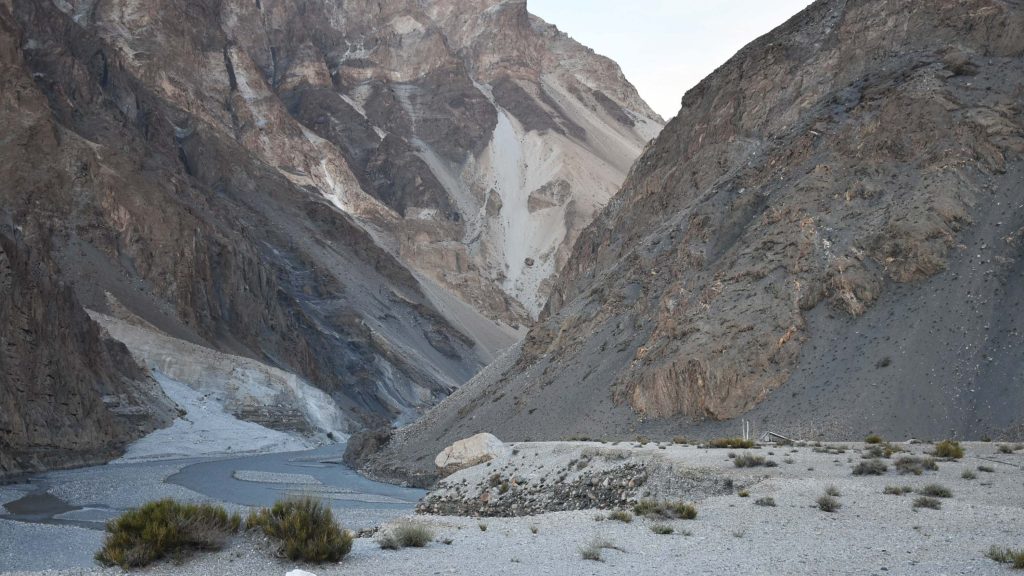
The view of Phase-1 project site from a distance 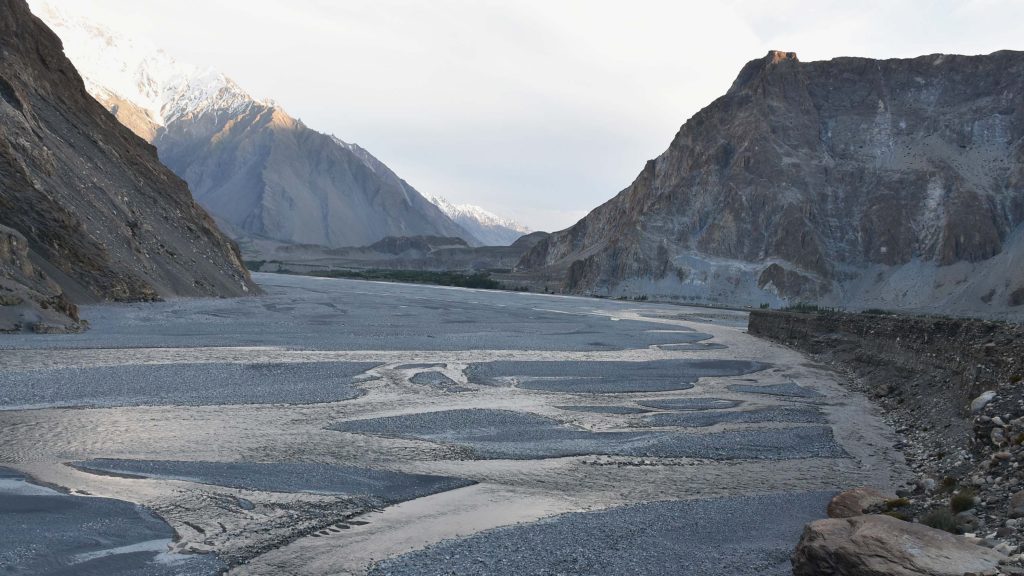
The water for Phase-1 project site is pumped from Shimshal river 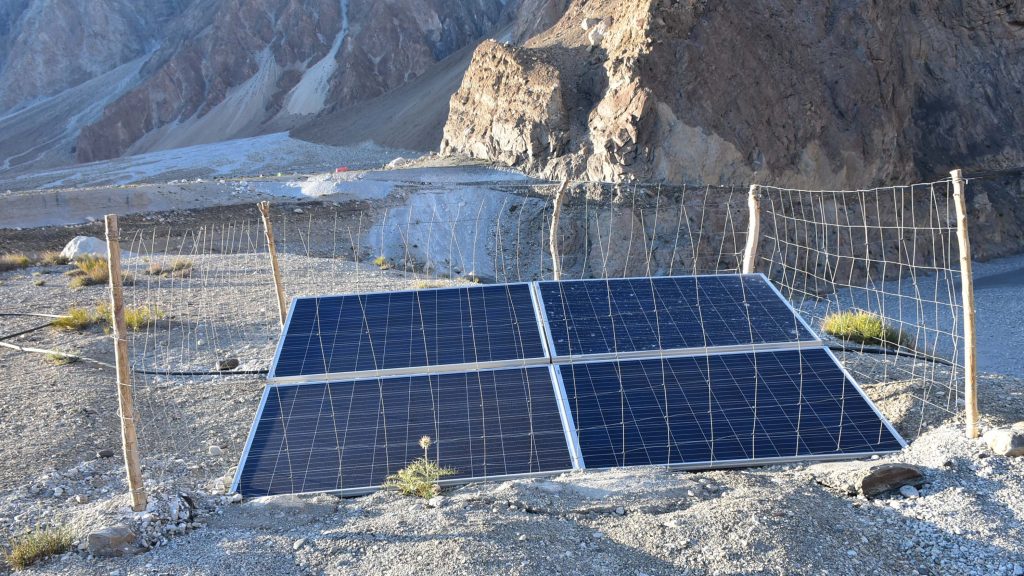
Solar panels are being used to irrigate the apple orchard
“We are having a success rate of almost 90 per cent, as the apple plants are in a healthy condition.” Haider continues,“The Phase-1 of the project is also managed by women and the revenue generated will go to them,” says Haider.
The innovation
The hydro ram pump, also known as hydraulic ram or hydram is not a new invention. A manual version of the hydro ram pump was invented in 1772 by a British engineer John Whitehurst in Cheshire, UK. Whereas the first automatic hydro ram pump was invented by Joseph Michel Montgolfier in 1796.
The hydro ram pump introduced through WWF-Pakistan’s project offers an uninterrupted supply of water throughout the year and is considered a boon for the mountain communities. The hydro ram pump judiciously distributes water to the apple orchard through a network of drip irrigation. With climate change leading to a decline of glaciers in the Hindu Kush Himalayan region of Pakistan, the hydro ram pump can meet the growing water demand for agricultural uses.
Climate change impacts on water and food security in Pakistan
A research confirms that Pakistan is home to over 7,000 glaciers and owing to the increasing impacts of climate change, 3044 glacial lakes have formed. Of these glacial lakes, 36 have been declared ‘potentially dangerous’ which can result into devastating glacial lake outburst floods.
The government is fully aware of the importance of glaciers in ensuring water and food security in Pakistan. Shehzad Shigri, the director of Gilgit Baltistan’s Environmental Protect Agency (EPA) informs, “The glaciers in Gilgit Baltistan release 50.5 billion cubic metres of water in the Indus river, which is 72% of the main annual flows of the Indus river.” He continues, “The Indus river supports almost 70% of agriculture and 40% of hydropower in Pakistan, which shows the importance of these glaciers in ensuring water and energy security.”
“However climate change has disturbed the weather patterns, as previously it used to snow in October and November but now it is happening in January and February. Later in March and April due to heatwaves and increased temperatures, the snow which is not mature by that time starts to melt away, turning into a downslope disaster,” reveals Shehzad.
He further says, “Access to water in Gilgit Baltistan is already difficult due to lack of infrastructure, and climate change further risks our water security. When we want the water it’s not available and when we don’t want it, it’s abundant!”
Climate change has adversely affected the monsoon season as well. This is confirmed by the director general of Ministry of Climate Change, Irfan Tariq who shares how climate change is impacting the rainfall patterns of the country. According to Irfan, “The monsoon season has shifted 100km towards north of Pakistan, which means that now the agricultural plains of Pakistan would not be receiving the regular amount of monsoon rain, the way they used to.”
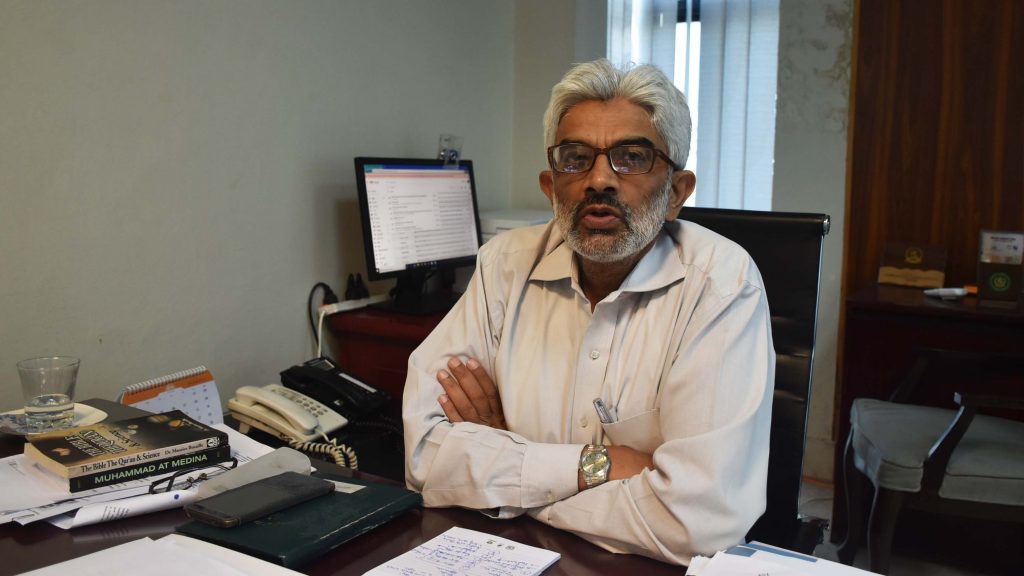
He further says, “The movement is from Sindh and central Punjab towards the north of Khyber Pakhtunkhwa and Gilgit-Baltistan. It is expected that the yield of wheat is going to decrease by 14-15% due to climate change.”
“The north of Khyber Pakhtunkhwa and Gilgit-Baltistan willreceive more rainfall but their contribution to the national wheat output is just two per cent,” adds Irfan.
Increased rainfall in the mountainous areas of Pakistan due to climate change shouldn’t encourage farmers to bring more area under wheat cultivation. Ali Tauqeer Sheikh, who till recently was the chief executive officer of Leadership for Environment and Development (LEAD) Pakistan says, “The idea is neither sustainable nor is the introduction of new varieties of wheat without assessing their suitability to the climate.”
“The Hindu Kush Himalayan region of Pakistan is a highly fragile ecosystem and if it gets destabilized due to unsustainable practices, the frequency and intensity of downstream disasters will increase,” cautions Ali Sheikh.
He further says, “This mountainous region is suffering from every water-related disaster except sea intrusion. The introduction of alien species of crops can be counter-productive for the environment, if it is not well regulated and well thought through.”
“That certainly does not mean compromising the right of mountain communities to develop. The challenge is that we do not want to bring Punjab to the mountainous areas. The challenge is not to Punjabize this region,” adds Ali Sheikh.
Not everyone agrees with Ali Tauqeer Sheikh on this. According to Dr. Pervaiz Amir, the director of Pakistan Water Partnership (PWP), “Gone were the days when even salt was brought from Punjab to meet the needs of the mountain communities. The Hindu Kush Himalayan region of Pakistan must ensure its food security.”
“In fact, higher rainfall in this mountainous region offers a golden opportunity to grow high-value crops such as cherries and apples that can lead to greater profits. The cultivation of wheat and rice should certainly be avoided.” Dr. Pervaiz adds, “These mountain communities have water rights and their dependence on the water resources for high-value crops wouldn’t make a significant difference.”
Irfan Tariq similarly urges to promote water efficient irrigation systems that can ensure ‘More Crop Per Drop’ output. He also calls upon the governments of Gilgit Baltistan and Khyber Pakhtunkhwa to implement the 2012 National Climate Change Policy in order to ensure food security in the region.
The communities of Khyber valley consider the hydro ram pump as a blessing in disguise, which has irrigated their barren land and helped to grow an apple orchard that was otherwise impossible. It is up to the government now to up-scale this technology in other valleys, where agriculture is getting affected due to limited availability of water.
